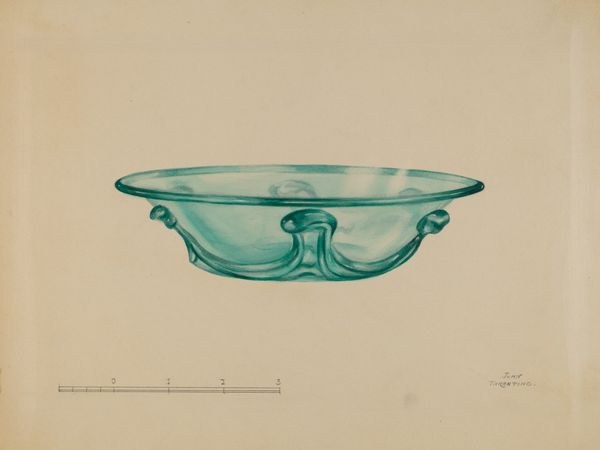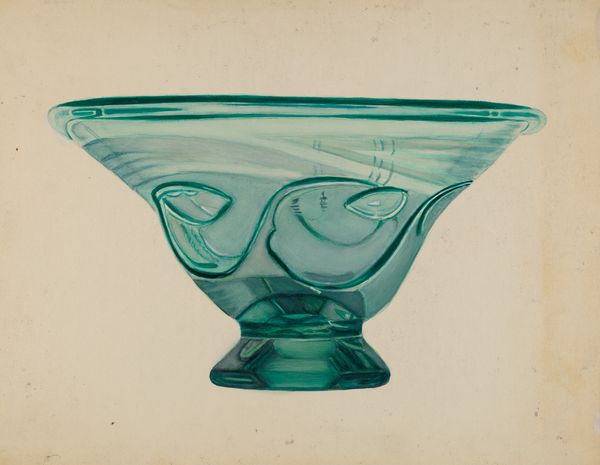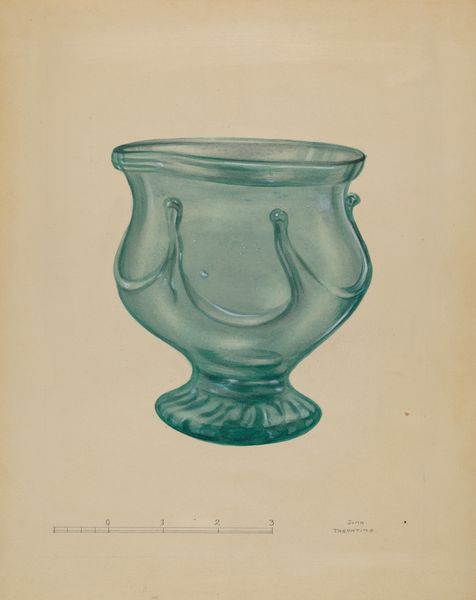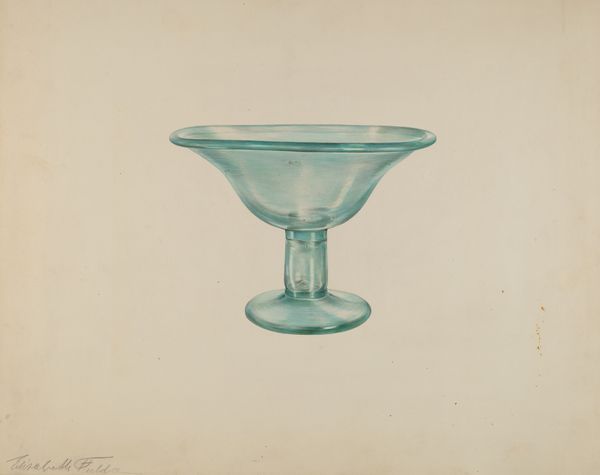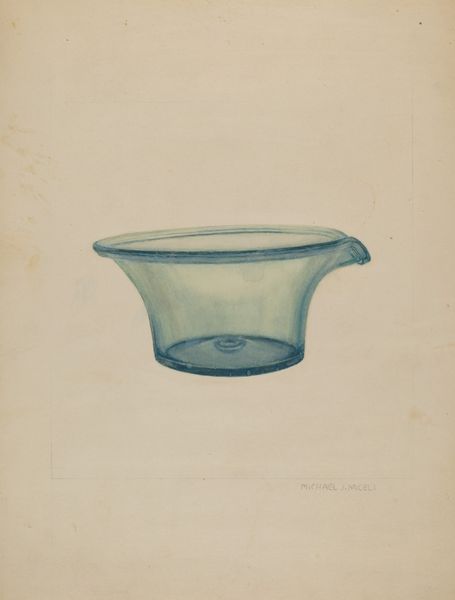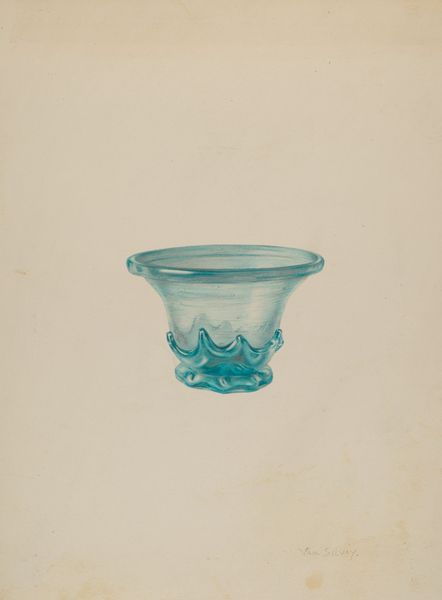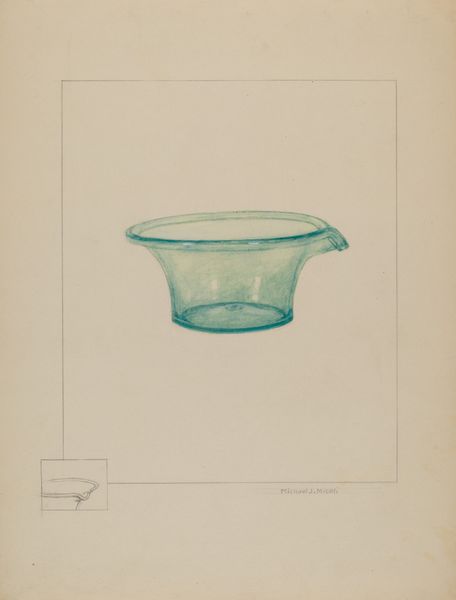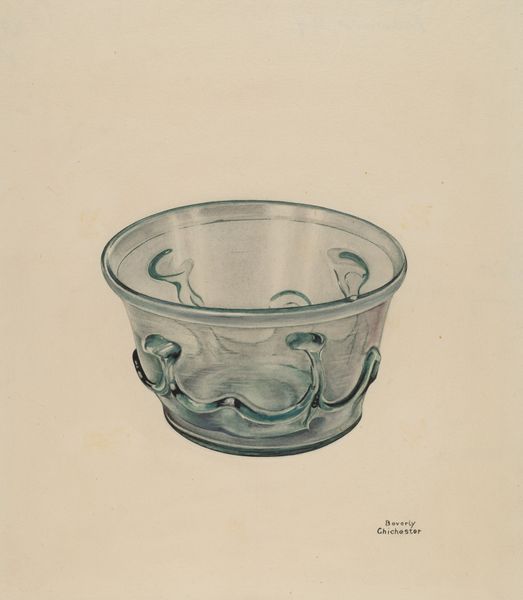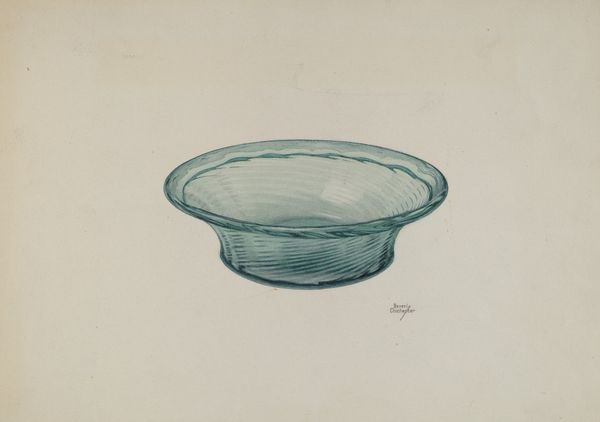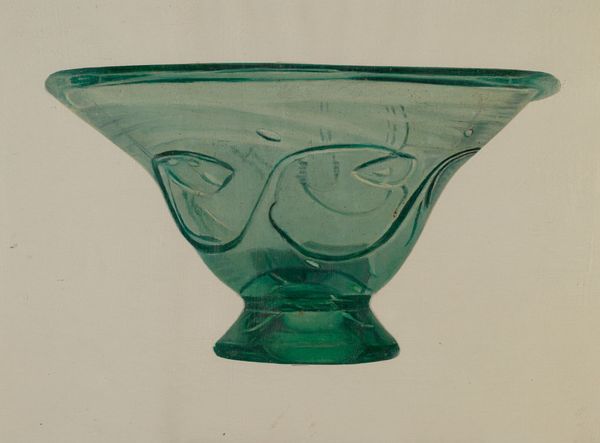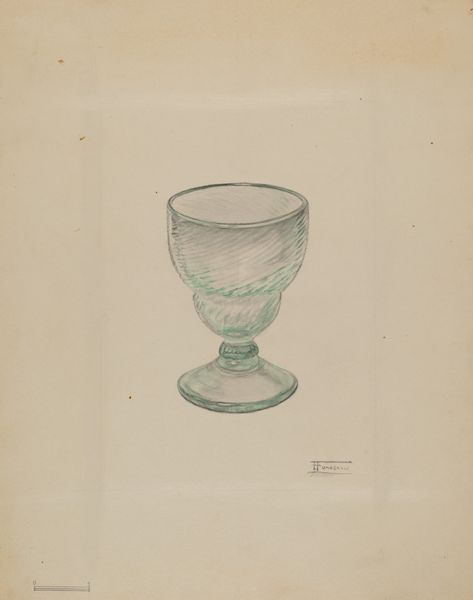
drawing, watercolor
#
drawing
#
pencil sketch
#
watercolor
#
pencil drawing
#
watercolour illustration
#
watercolor
#
realism
Dimensions: overall: 22.8 x 29.4 cm (9 x 11 9/16 in.)
Copyright: National Gallery of Art: CC0 1.0
Curator: Janet Riza’s “Compote,” dating circa 1936, strikes me with its surprisingly tranquil feel. There’s a gentle light filtering through it, wouldn’t you agree? Editor: Indeed. The rendering of the glass is compelling, the formal precision of its shape meticulously observed. It’s almost photographic in its clarity. But let's not ignore the historical context. During the Depression era, images of domesticity—even simple glass bowls—gained heightened importance. Could this piece speak to that moment? Curator: Absolutely. I see that in the way the light dances on the surface; the artist offers a beacon of subtle hope amid social hardship. And even glass has its own class associations. Were certain types more available to those from marginalized socioeconomic groups, perhaps making still lives accessible subject matter? Editor: Interesting proposition. Consider, though, the structure of the compote itself—the geometric shapes interplaying and giving rhythm to the glass. Look at how the foot leads to a sphere and then opens to this flared bowl. It suggests a careful arrangement, an attempt to achieve a harmonious visual balance. Perhaps a visual reprieve from discord? Curator: True, but these objects aren’t isolated from socio-political elements either. Serving bowls symbolize community—breaking bread, coming together, sharing resources when people were out of work and potentially going hungry. The emptiness could actually speak volumes about loss. Editor: Loss indeed might be a compelling association here, in relation to emptiness, yet Riza has carefully placed linear forms beneath it, maybe referencing art’s historical dialogue with industrial-scale measurement through their integration in a work ostensibly about ‘nature’ or even ‘daily life’? This reminds me of scientific instruments and art in this era finding common visual ground. Curator: That is quite interesting and gives a deeper read to the artwork than just its beautiful rendering. Perhaps, we should stop seeing such images as benign slices of realism and start examining their complex reflections on a difficult time for so many. Editor: Agreed. Considering the structural elegance alongside such sociopolitical contexts brings the piece into sharper focus.
Comments
No comments
Be the first to comment and join the conversation on the ultimate creative platform.
